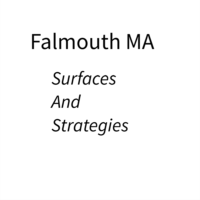Talk with Edmund Clark and Johnathan Watkins (Director at IKON Gallery in Birmingham) which is part of the PhotoLondon Talk that accompanies PhotoLondon Show.
‘Edmund Clark: The Day the Music Died features a linked series of publications and photographic projects completed over more than 10 years. This site-specific exhibition invokes an immersive and sensory engagement with the experiences of observation, detention, and disorientation explored through the artist’s work.’ (International Center of Photography, 2018)
Clark has recently exhibited at the IKON Gallery a show that will get discussed later in the talk. Clark is currently exhibiting in New York at IPC with a show titled ‘The day the music died’ ( a song by Don MacLean.) The IPC show is the third time Edmund has exhibited work from his war on terror bodies of work. This work has already been show in different forms at the Imperial War Museum (London) and in Germany. Each time the work has been shown Edmund explained that its configuration has changed to work with the gallery space and new work has been introduced alongside previous bodies of work. (Reflection: In preparing for my own exhibition this is useful point of reflection that the space can influence the way the work is read.) The shape of the gallery allowed Clark construct a central enclosed space to house projections for new body of work titled 198 2000 which is images of abuse of people held in detention. 198 relates to the number of images released. The space means that the reader will walk in front of the projector beam and the images abuse executed in our name by government will fall on our bodies.
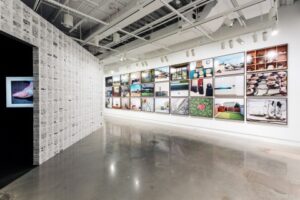
The outside of the space has television screen showing images of individuals who are related to the war on terror. Another wall hosts the redacted documents related to detention of terror suspects. Another wall show picture of the safe houses used to hold detainees as they were transported or detained alongside images from the detention camps. Clark states that the banality of these images is a way for people to connect with these places as the images could be seen as similar to the images one might take of our own homes when trying to rent a room on a site such as AirBnB.
Extraordinary Rendition was a new strategy for visual arts based around Investigative Journalism (Reflection contemporary art can take on new genres and forms as we explore different ways of telling stories and therefore one should not be afraid to explore new paths.) Clark discussed the way technology has changed views on fighting terror and the legality of unmanned drones. Nobody is there to record the effects of these weapons and impact on the ground which can make its feel this type of warfare is somehow clinical with no collateral damage that photographers and journalists on the ground would traditionally record. There are questions of the legality of these types of strikes where power is projected from homes in the USA.
The IPC exhibition was named after one of the songs played to disorientate detainees. Clark indicates knowing this fact means has fundamentally changed the way he view this song. Many other audio that we associated with our lives such as the Simpsons was also played to control those in detention alongside the use of physical interrogation techniques such as water boarding.
The talk proceeded to talk about the recent exhibition at IKON ‘A Place of Hate’ (Ikon-gallery.org, 2018) Clark has been in residency at the prison for a number of years and the work on exhibition has been created with the approval of the HMP. ‘
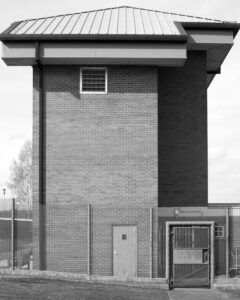
Established in 1962, HMP Grendon requires inmates to accept responsibility for their offence. Within the prison environment they can exercise a degree of control over the day-to-day running of their lives, making a commitment to intensive group therapy and democratic decision-making, whilst holding each other to account. Evidence shows that Grendon has delivered lower levels of violence in prison and reduced instances of reoffence after release.’ (Ikon-gallery.org, 2018
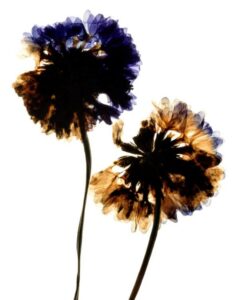
The exhibition was split across multiple rooms each room displaying different aspects of the life of residents of Grendon. 1.98m2 is lightbox constructed based on the dimensions of a prison cell. Residents spend from 7:30pm locked down in their cells. The lightbox contains pressed flowers that Clark collected from the unused spaces in the prison. Clark explained the flower were pressed using prison paper and due to a lack of experience with the technique a number of the flowers have rotted. He explained that once residents became aware of his collecting of flowers they who inform him of the location of different flowers in the prison. The plants in the display are symbolic of the variety, detail and fragility of the residents going through therapy. Johnathan felt the exhibition was transformative in way it makes us look at people in prisons. (Reflection: Using non photographic material to help convey meaning is something that during the last module I started to do with the rubbing of the piers and surrounding structures. This something that is potentially worth considering for inclusion in the exhibition. The rubbing patterns remind me of the general ripples we see on the surface of water surrounding the landing staging stages and piers. An abstraction of a physical structure can look the same as an abstract view of the water.)
The second part of the exhibition is screen showing paths that residents can take with the walls of the prison. The videos do not contain images of residents referencing the that that when you enter prison you disappear from society. When residents accidentally entered the videos of theses walks Clark has used a mosaic effect to remove them from the videos. The longest possible journey lasts some 14 minutes and is around the perimeter of the prison. The clips are exhibited as continuous loops to mirror the repetitive nature of journey’s with the prison. (Reflection at the current time my exhibition does not incorporate any form of moving images though early in the project I did create short timelapse videos of some of my walks that were used to capture images during the “Informing Contexts” Module. This is something that is worth considering as part of the exhibition.)
The third part of the exhibition is a recording of a group therapy session based on psycho-drama where protagonists of the crime play their victims. This is based on Greek tragedy. The process is a cathartic process where we see inmates wearing masks as they play out bad behaviours and then discuss the experience from the perspective of perpetrator, victim and witness. The session was recorded from there different angles and is displayed on three screens placed on chairs from Grendon in a therapy circle. Clark was not able to use close-ups of the inmates to ensure that if they were released at a future date they could not be recognised.
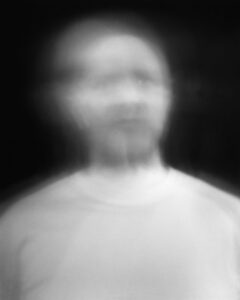
The final part of the exhibition uses consists of projections of inmates on to the bed sheets used in the prison cells. Clark created the projections using a pinhole camera to mask the identify of the individuals in the portraits. The images were created using long exposures lasting 7 minutes. During that time subjects answered questions about themselves during the exposure. Clark commented that the images are a reflection of the words of the prisoners and this gives meaning to the images. The images do appear almost ghostly in form but when the residents was they images they made comments about the images reflecting them as a person.
The talk concluded with a questions and answers session. I asked Clark where he has show work in multiple exhibition if he felt the work was ever resolved. Clark’s response was that he felt work could be resolved even though it might be presented in different forms at future exhibitions.
I presented Clark with an invite to my FMP show in August on the back of a photograph from the series ‘Last person to leave turn off the tap’ as the images use photographic language similar to that used by Clark in his Camps series.
References
- Ikon-gallery.org. (2018). Ikon In Place of Hate. [online] Available at: https://www.ikon-gallery.org/event/edmund-clark/ [Accessed 20 Apr. 2018].
- International Center of Photography. (2018). Edmund Clark: The Day the Music Died. [online] Available at: https://www.icp.org/exhibitions/edmund-clark-the-day-the-music-died-traveling-exhibition [Accessed 20 Apr. 2018].


